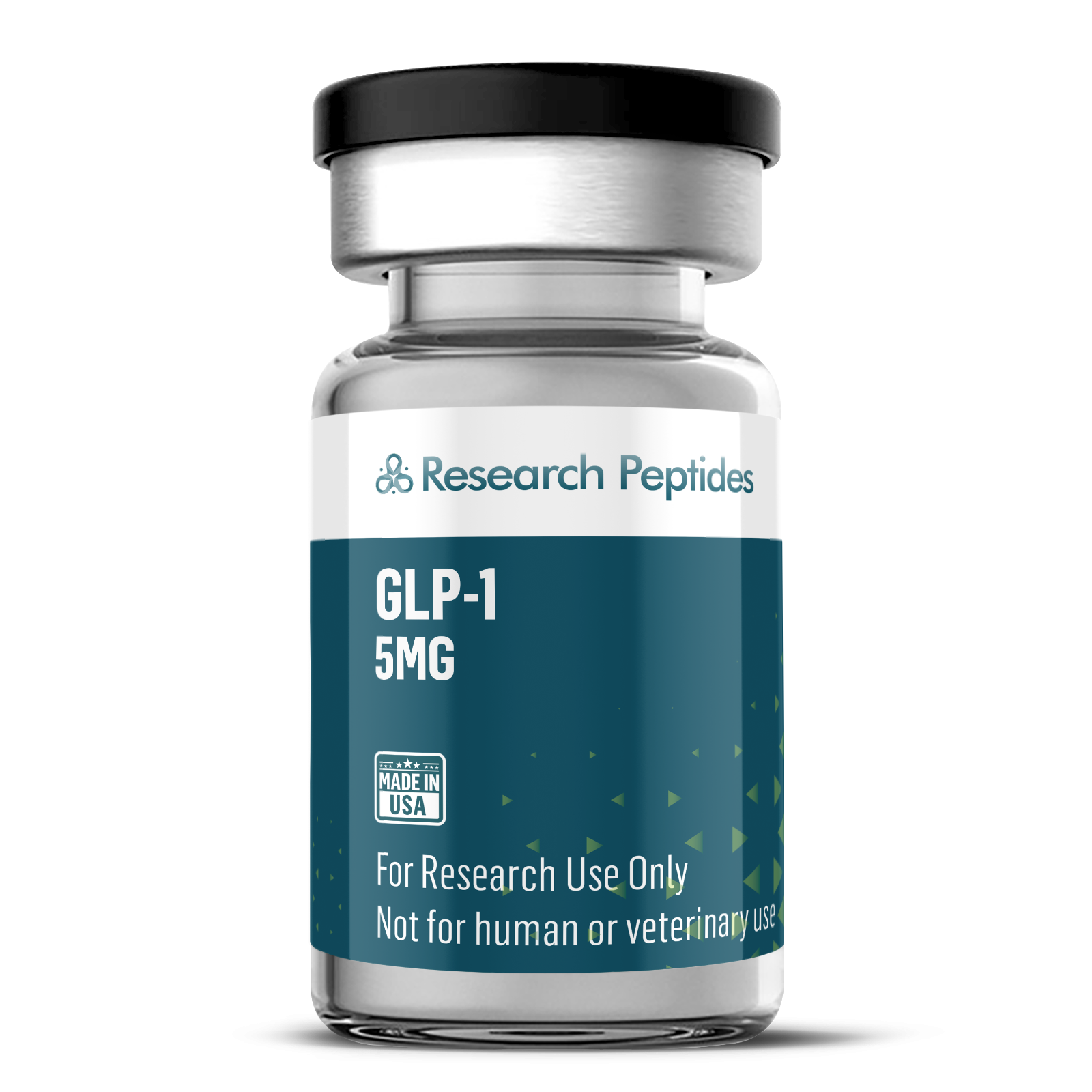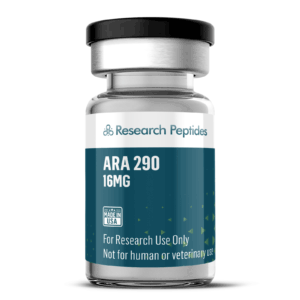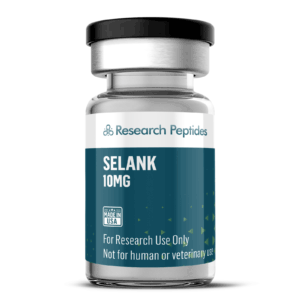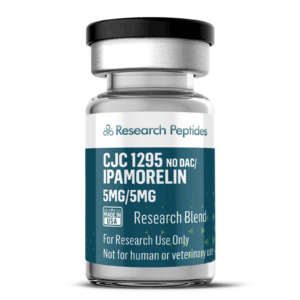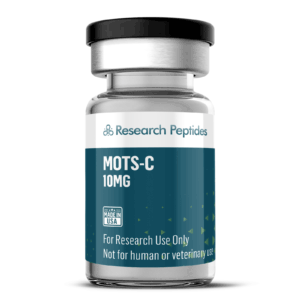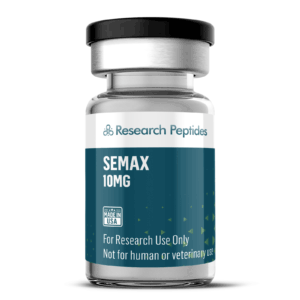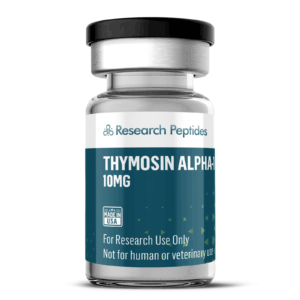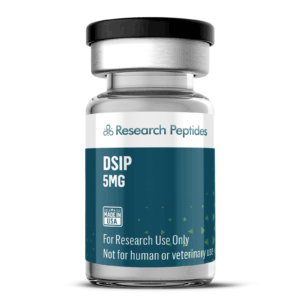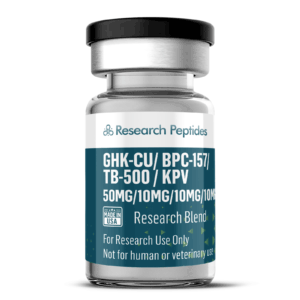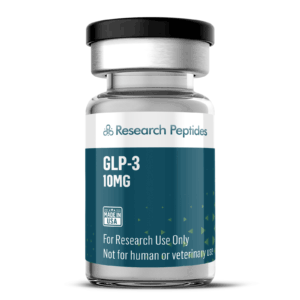GLP-1 – Research Chemical
Our GLP-1 (Glucagon-Like Peptide-1) is a high-purity peptide crafted for advanced scientific research, offering a powerful tool for investigators exploring metabolic regulation, appetite control, insulin secretion, and beyond. Synthesized in the United States under stringent quality standards, this lyophilized peptide is available in various dosages to accommodate diverse experimental needs. With a purity exceeding 99%, it is designed exclusively for non-human laboratory studies, supporting research into type 2 diabetes, obesity, cardiovascular health, neuroprotection, and liver function. This product is not intended for human or animal consumption, ensuring its use is confined to controlled research environments.
Understanding GLP-1
GLP-1 is a 30-31 amino acid incretin hormone naturally secreted by intestinal L-cells in response to food intake. It belongs to the glucagon peptide family and exerts its effects through the GLP-1 receptor (GLP-1R), a G protein-coupled receptor expressed in pancreatic beta cells, the gastrointestinal tract, brain, heart, and other tissues. Its primary physiological roles include enhancing glucose-dependent insulin secretion, suppressing glucagon release, slowing gastric emptying, and reducing appetite. These actions make GLP-1 a cornerstone for studying metabolic homeostasis and its implications in various disease models.
In research settings, GLP-1 mimics the endogenous hormone’s ability to regulate blood glucose levels without causing hypoglycemia, as its insulinotropic effects are glucose-dependent. It also influences energy balance by acting on hypothalamic pathways to reduce food intake, offering insights into obesity mechanisms. Beyond metabolism, GLP-1 exhibits anti-inflammatory, cardioprotective, and neuroprotective properties, broadening its research applications. For instance, a 2024 review in Signal Transduction and Targeted Therapy link emphasized GLP-1’s potential in addressing not only diabetes and obesity but also neurodegenerative disorders and cardiovascular diseases.
Research Applications:
The versatility of GLP-1 makes it an invaluable peptide for a wide range of preclinical studies. Below are some key areas where this peptide is applied:
- Type 2 Diabetes (T2D): GLP-1’s ability to enhance insulin secretion and improve beta-cell function in a glucose-dependent manner is central to diabetes research. It also reduces glucagon secretion, lowering hepatic glucose output. A 2024 meta-analysis published in BMJ link found that GLP-1 receptor agonists significantly lowered HbA1c levels and body weight in T2D models, highlighting its utility in studying glycemic control and beta-cell preservation.
- Obesity and Energy Balance: GLP-1’s anorexigenic effects, mediated through GLP-1R in the hypothalamus, make it a focal point for obesity research. By slowing gastric emptying and reducing appetite, it promotes weight loss in non-human models. A 2023 study in the New England Journal of Medicine link demonstrated that an oral GLP-1 agonist, orforglipron, led to 9.4-14.7% body weight reduction in obese subjects, underscoring its potential in energy expenditure studies.
- Cardiovascular Health: GLP-1 exhibits cardioprotective effects, including improved endothelial function, reduced blood pressure, and decreased risk of major adverse cardiovascular events (MACE). A 2023 study in Cardiovascular Diabetology link reported that semaglutide, a GLP-1 analog, reduced MACE by 20% in T2D models, making GLP-1 a key peptide for studying cardiovascular outcomes in metabolic disease.
- Neuroprotection: GLP-1’s ability to cross the blood-brain barrier and activate GLP-1R in neural tissues offers exciting prospects for neurodegenerative research. It reduces neuroinflammation, enhances synaptic plasticity, and mitigates cognitive decline in models of Alzheimer’s and Parkinson’s diseases. A 2023 meta-analysis in Frontiers in Pharmacology link confirmed GLP-1’s neuroprotective effects in Alzheimer’s models, suggesting its role in preserving cognitive function.
- Non-Alcoholic Fatty Liver Disease (NAFLD): GLP-1’s anti-inflammatory and lipid-lowering effects make it a candidate for studying liver health. It reduces hepatic fat accumulation and improves liver enzyme profiles in NAFLD models. A 2024 study in the Journal of Hepatology (link) indicated that GLP-1 agonists ameliorated liver fibrosis and steatosis, providing a foundation for hepatology research.
- Gut-Brain Axis and Inflammation: GLP-1 modulates the gut-brain axis, influencing systemic inflammation and immune responses. Its ability to reduce pro-inflammatory cytokines, independent of weight loss, was demonstrated in a 2024 Cell Metabolism study, offering insights into its role in inflammatory and autoimmune conditions.
Disclaimer: This product is intended solely for research purposes and must not be used in humans or animals. Purchaser assumes full responsibility for safe and compliant use.

